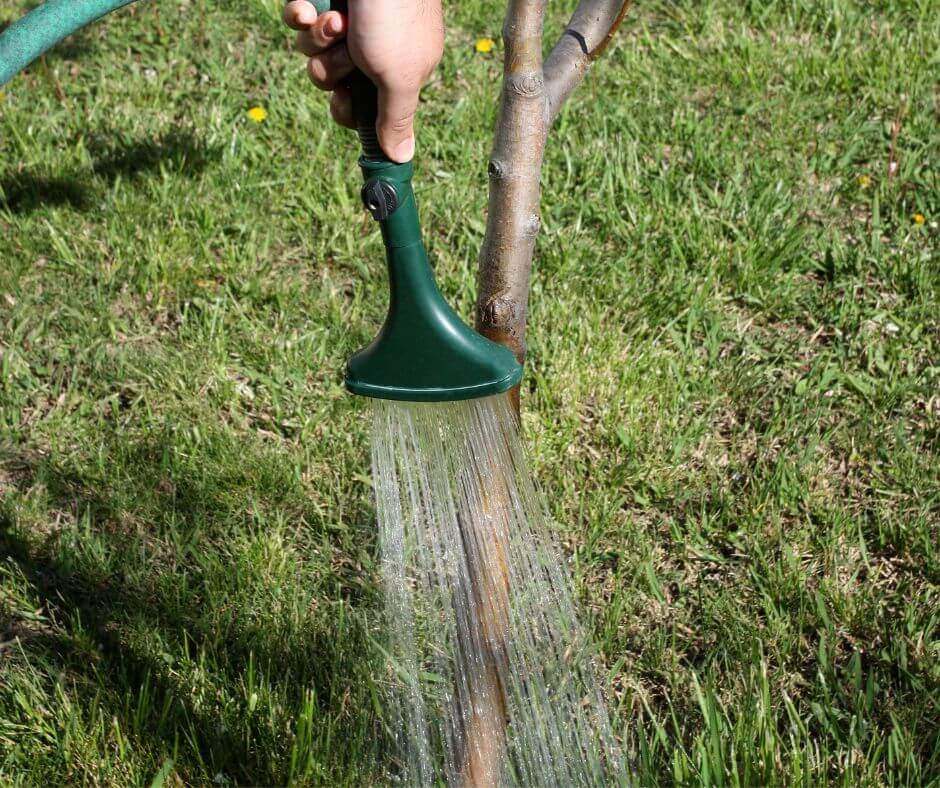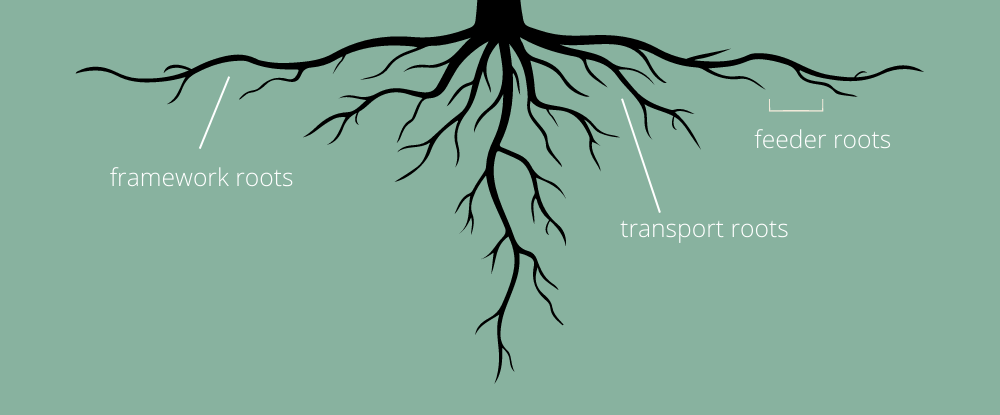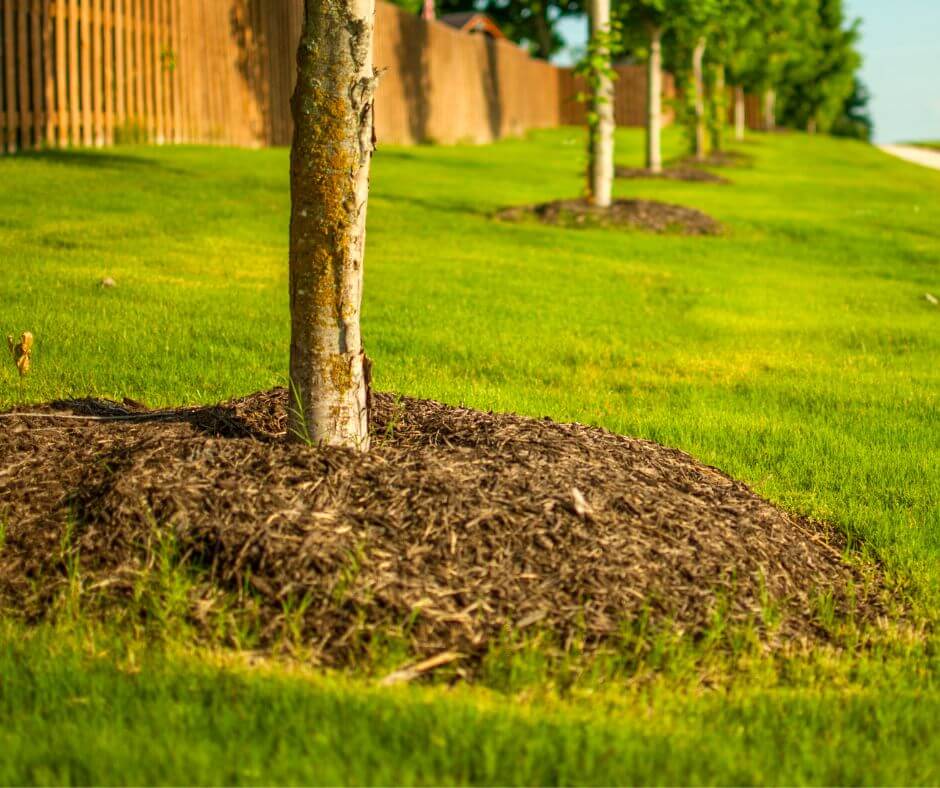Drought: Causes, Implications, and What You Can Do About It
Despite our abundance of lakes, Minnesota summers have been dry. A dry summer is stressful for people, trees, and plants. Although droughts are regular, dry weather during crucial growth periods can cause irreversible damage.
The term “drought” refers to a period of time without precipitation. As the water content declines, trees can no longer extract enough water from the soil. This causes them to become stressed. Trees need water to meet their needs, and shortages can limit growth and survival.
Effects of drought stress
Drought can have severe effects on trees. While native plants usually adapt to varying rainfall, drought can cause other problems. Already stressed trees are likely to decline even more following a drought. Trees that went into the drought in good shape may become susceptible to disease or pests.
Early signs
Trees signal their water deficit through many symptoms. Early effects caused by one dry period include wilting, leaf scorch, and defoliation.
As leaves dry, turgor pressure in leaf cells decreases, causing wilting. The relation between water loss and visible wilting varies among species. Temporary wilting is the drooping of leaves during the day followed by rehydration and recovery at night. During long dry periods, temporary wilting turns into permanent wilting. Wilted trees only recover when water is added to the soil. Without water, prolonged wilting kills trees.
Long-term effects
The effects of drought are not always immediate, and the damage can take one to two years to become apparent. Long-term damage includes stunted growth, branch dieback, and death. Many trees can take up to three years after a drought to display long-term effects.
The primary effects of drought are root damage and death. The root system consists of a hierarchy of roots. This includes framework roots, transport roots, feeder roots, and root hairs.
The delicate root hairs are responsible for the bulk of water uptake. Unfortunately, they are also the first part of the root system affected by dry conditions. The death of root hairs reduces the plant’s water-absorbing capacity.
The death of fine feeder roots can also cause branch dieback. As soils dry in the summer, the fine roots may increase to get what little water is available. If the soil remains dry, they will die. When rain does return, the tree may not be able to take full advantage because of its reduced root mass. When this happens, it puts the root system out of balance with the amount of foliage aboveground. The canopy will then die back to compensate for the root loss. It may die if drought persists into the next growing season or recurs before the tree can recover.
Stomatal control
One of the earliest responses to drought in leaves is stomatal closure. Stomata are small openings on the underside of the leaf that allow gas exchange and water loss. Stomates often close during the early stages of drought.
Trees resist excessive water loss through stomatal regulation. However, stomatal closure will not prevent water loss. Trees still lose water through the leaf after the stomata close. Many trees close stomata in the middle of the day. In the late afternoon, stomata reopen and increase transpiration. The extent of midday stomatal closure depends on humidity and soil moisture. As soil dries, the daily duration of stomatal opening reduces. When the soil is arid, the stomates may not open at all.
One effect of severe drought is permanent damage that prevents stomatal opening. After a drought, stomatal opening may not occur for an extended period.
Leaf shedding
Drought can induce premature shedding of leaves, called abscission. In a severe drought, leaves may be shed while still full of valuable materials. Drought stress can start the abscission process, but it cannot happen without adequate water to shear connections between cell walls. This means that leaf shedding may not occur until after rehydration.
Limited growth
Droughts constrain growth. But, the impact of drought on growth depends on the location and species.
In many trees, drought inhibits shoot expansion. When a tree is devoid of water, it doesn’t produce new nodes. Shoots of some trees elongate in only a few weeks in late spring, called fixed or determinate growth. Shoot formation in fixed-growth species is a two-year process involving bud development in the first year and extension during the second. Environmental conditions during the year of bud formation can control the following year’s shoot lengths. A drought during the year of bud formation decreases the number of new leaves formed in the bud. Drought then influences the number of leaves, size, and extension the following year when the buds expand.
Other species elongate shoots over several months, called flushing or continuous growth. Shoots in the upper crown exhibit more seasonal growth flushes than those in the lower crown. Drought may not inhibit the first growth flush but may decrease the number of stem units in the bud that will expand during the second. If the drought continues, it will affect all growth flushes.
Increased susceptibility to insect and disease issues
Another result of long-term drought is disease and opportunistic pests. As drought weakens trees, they become susceptible to disease and pests as the ability to ward them off diminishes.
Drought-stressed trees are often too weak to ward off disease. More incidences of stem canker and other diseases are expected to occur in the years following a drought. Among the diseases likely to occur in response to drought are root rots, cankers, wood rots, and wilt.
Stressed trees are also prone to pest problems. Healthy trees produce oleoresin, which deters feeding by borers. When a tree becomes stressed, it decreases production of oleoresin, resulting in susceptibility to borer attacks. Attacks on trees by borer insects are more severe in dry years. This is a result of the tree’s inability to grow faster than the rate of damage due to the lack of water. Also, many beneficial insects, such as predatory mites, slow or stop foraging during droughts. This also contributes to frequent invasions.
What you can do to lessen the impact of drought
While no one can predict how long a drought will last, we know that droughts will occur occasionally. Choosing suitable trees for your area and caring for them are the best ways to lessen a drought’s long-term impact. Weeding, deep watering, and mulching over the soil are the best ways to weather a drought.
The best time to fertilize trees is in the fall. Fertilizing trees in September and October will improve plant hardiness, helping them to withstand dropping temperatures. Stressed or drought-ridden trees should not be fertilized. The fertilizer will pull water away from the roots as the tree uses its energy to process the fertilizer. If water isn’t available, it won’t be able to absorb the nutrients at all.
How to water trees
Trees need a lot of water. Without water, they are unable to transport nutrients and photosynthesize. The simplest way to relieve drought stress in trees is through supplemental watering. But how much water does a tree need? This depends on the size and species. Most trees need approximately one inch of water per week.
Watering trees in the early morning is best to prevent water loss. On a summer day, trees lose most of their water through transpiration. This evaporation from the leaves allows water molecules to move from the roots through the trunk and into the branches. Conifers with thick, waxy foliage lose less water than oaks or maples with their thin foliage.
To check if you are watering enough, place an empty can within the watering zone and water until there’s an inch in the can. After the first watering or two, dig a narrow hole to a foot deep and check to be sure the soil is moist. If not, you may need more water.
Watering mature and established trees
Mature trees have an expansive root system that can supply some of the water lost through transpiration. As a result, they only need supplemental watering to get through periodic droughts.
Watering recently planted trees
Recently planted or unestablished trees need water often. To ensure survival, water new trees two times a week. For vigorous growth, water daily for the first month and two to three times weekly.
Supplemental deep-watering
For most soil types, water is best applied as a deep soaking to 8-10 inches. The time required for deep water will vary depending on soil type and pressure.
For mature trees, deep watering is preferable to frequent shallow irrigation. Frequent shallow irrigation promotes shallow rooting and less drought-tolerant trees. Light watering can cause harm by promoting surface root growth.
A deep soaking before the ground freezes in the fall will help the winter hardiness of drought-stressed trees. You can deep water by hosing under the tree’s canopy for one to two days at a low flow so the water percolates into the soil. It is vital to ensure that the water penetrates deep into the soil.

Mulching
Mulches help with soil moisture retention, weed control, and temperature moderation.
Mulches need to be applied correctly to be effective. The soil should be moist when you apply the mulch. Mulches should be applied approximately 6-12 inches from the trunk. Mulches are usually applied one to three inches thick and spread to the tree’s drip line.
Mulches that are too thick or close to the base of the plant can be harmful. When applied too thick, the mulch impedes water penetration and smothers the roots. Applying too close creates favorable conditions for stem and crown rots.
Since fine-feeder roots are so close to the surface, they can dry out and die when the soil loses moisture. Adding mulch under the drip line will retain moisture and promote healthy roots.
Choosing drought-resistant plants
Select native, drought-tolerant plants, if possible. Native plants adapt to seasonal fluctuations and only react to severe drought. But native plants can show symptoms of drought and severe water stress if we don’t plant them right.
Trees in shallow soils will be more susceptible to drought stress. These include trees growing in rocky soils, shallow planters, or compacted soils. These trees have shallow root systems and are subject to hotter and drier surface soils.
Trees with deep roots are more resilient to drought and are capable of mining deeper soils. These trees are less likely to react to short-term droughts.
Some species of trees will be more tolerant to drought than others. Drought-tolerant trees generally have thick and waxy leaves capable of minimizing water loss. Drought-tolerant species include oaks, evergreens, aspens, and elms.
Planting methods
Use the correct spacing for each type of plant. Crowded plants don’t grow well and are forced to compete for available water.
Select the appropriate site and follow good planting practices. Preparing a tree to be planted is crucial in ensuring it is best prepared for weathering droughts. Because of how roots grow, the planting hole should be dug at least twice as wide but no more profound than the rootball. If the tree roots are wrapped in burlap, altogether remove it. With container-grown plants, the root ball should be moist, scored, cut, and teased apart before planting.
What to do before winter
While droughts may come and go, homeowners need to be aware that the adverse effects of drought may be a problem for years to come. Right now, the most important steps you can take are fertilizing and deep-watering your trees before winter.




